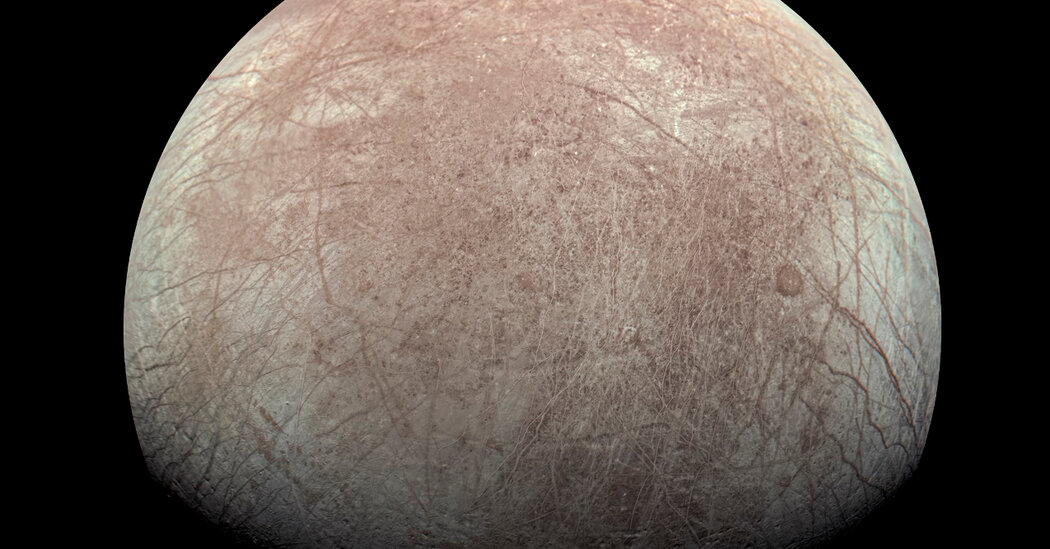The spacecraft will lift off Monday on a SpaceX Falcon Heavy rocket on a nearly six-year journey to Jupiter.
NASA’s first mission to Jupiter in more than a decade is scheduled to launch on Monday.
This time, the object of investigation is not the giant planet itself, but one of its moons: Europa. This Jovian satellite possesses an ocean of liquid water beneath its icy shell, and many scientists think it is the most promising place to look for life elsewhere in the solar system.
What is Europa Clipper?
The $5.2 billion NASA mission will study whether Europa, Jupiter’s fourth-largest moon, possesses ingredients and conditions favorable for life.
Europa Clipper is the biggest interplanetary spacecraft that NASA has ever built. At launch, it will weigh about 12,500 pounds — nearly half of that is propellant. When unfurled, its solar panels will span more than 100 feet — a bit longer than a basketball court.
The spacecraft is carrying a suite of nine scientific instruments, including cameras, spectrometers, a magnetometer and radar. Researchers on Earth will use that tool kit to study the moon’s surface and interior in more detail than earlier missions to Jupiter could.
When is the launch and how can I watch it?
Europa Clipper will launch on top of a SpaceX Falcon Heavy rocket from NASA’s Kennedy Space Center in Florida.
Liftoff is scheduled for Monday at 12:06 p.m. Eastern time. Forecasts give a 95 percent chance of favorable weather. NASA will broadcast coverage of the launch on its website beginning at 11 a.m., or you can watch it in the video player embedded above.
